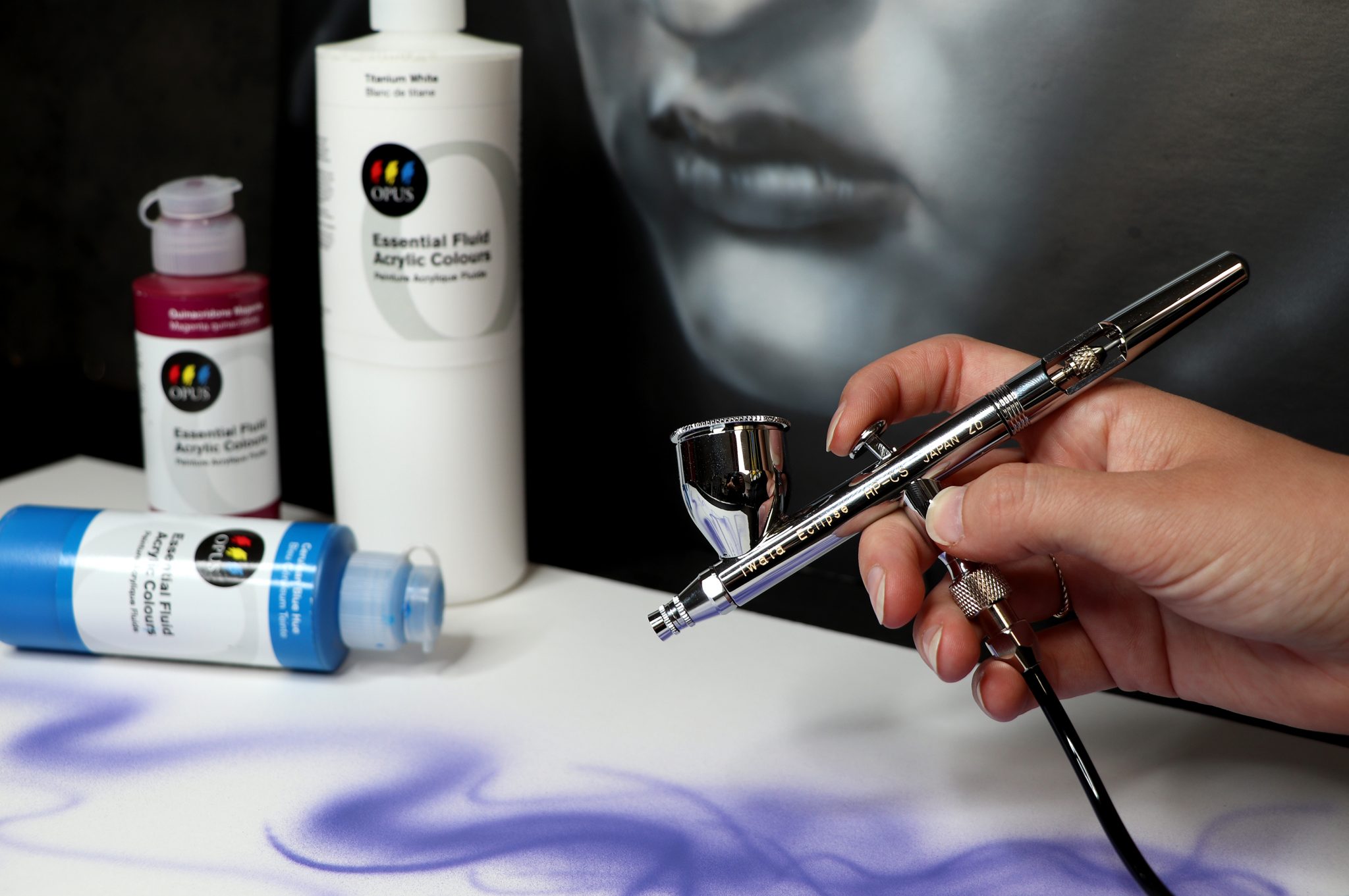Taking Fluid Acrylics Beyond Pouring
August 20, 2021Fluid Acrylics are like the younger sibling that has never been fully appreciated in the same way as traditional Heavy Body paint has been. In our Opus Essential Paint lines, our Essential Acrylics are definitely the favoured older sibling, and with it’s nice, thick consistency, many artists tend to overlook the benefits of our Opus Essential Fluid Acrylics.
With Opus Essential Fluid Acrylics, we created an ultra-low viscosity paint that is well suited for traditional acrylic and watercolour-like painting techniques. It will take you beyond simply pouring paint directly onto surfaces.
Much to the surprise of many, this fluid paint has the same pigment load as our Opus Essential Acrylics, but with a smooth flow, it opens itself up for more diverse applications while retaining its colour intensity, tinting strength, film integrity, and adhesion. This flexibility is perfect for many different techniques and can truly build on anyone’s acrylic painting experiences.
Knowing these basics, we’d like to give you a few snippets of Fluid Acrylic technique inspiration and additives that will hopefully allow for more creative freedom and help you get the results you’re looking for within your paintings.

Perfect for Detail:
Did you know that Fluid Acrylics are perfect for detail work on top of a Heavy Body Acrylic? It’s one of the biggest Fluid Acrylic secrets out there, and many artists don’t think to mix and match low viscosity with high viscosity paints readily. With the right brush, you can load it more evenly than thicker paints, and the colour also flows more consistently off the brush, allowing for longer, thinner, more uniform brush strokes (perfect for adding your final signature). The opposite is also true, if you are needing a heavier stroke, Fluid Acrylics can be blended with any gel mediums (like GOLDEN Soft, Regular, Heavy or Extra-Heavy Gels) to thicken the paint to your desired consistency.
Starting Your Painting from the Ground Up:
Another great Fluid Acrylic secret is using it as an additive to tint your gesso. The pigment allows for tinting both Traditional and Clear Gessos depending on the final result wanted. You can also use Fluid Acrylics as a quick flowing paint for initial colour blocking in your painting, then using Heavy Body paint in thicker or more textured layers over top.
Stains & Washes:
Staining with Fluid Acrylics can be used as a base, enhancing the beauty of wood grain on a panel rather than hiding it beneath a layer of an opaque paint. Some artists prefer to paint straight on the wood, while others prefer to use a coat of clear gesso first, then apply a stain over top to create a protective barrier between the wood and the paint. Depending on the transparency of the colour and the desired end result, Fluid Acrylics can either be used as-is or become more fluid and transparent by adding varying degrees of additives like the Opus Acrylic Medium, Liquitex Flow Aid or Golden’s Wetting agent (essentially diluting the paint without “watering it down”).
All Fluid Acrylics can also be used as a permanent watercolour-like wash, using similar watercolour techniques that allow for a build up of colour layers either on paper, canvas or wood panels. Ultimately, higher quality and heavier weight watercolour papers (100% cotton rag with minimum paper weights of 140lb/300gsm) will give you the best results. These papers hold more water, warp less and allow for more layering of washes and like watercolour, cold press paper is rough and absorbent, whereas hot press paper is smooth and not as porous. If working with a hot press paper, try mixing your colours with the Liquitex Flow Aid for great results.
For washes or stains on a primed canvas, definitely consider an additive as mentioned above to give deeper stains and more even application. To achieve watercolour effects on a non-absorbent surface such as primed canvas, you can also use Liquitex or Golden’s Airbrush Mediums to thin and bind your colours, giving a stable paint film.
With all additives, it’s best to do a series of experiments to see which result you like the most before including it in your artwork. When using the Golden Wetting agent, it’s also worth mentioning that this is a concentrated additive, so dilution and experimenting is not only highly encouraged, it is recommended.
Spray Application:
Airbrush is a wonderful way to lay colour down smoothly while not affecting the underpainting, even when wet. Along with the right equipment (an airbrush, air hose and compressor) and an airbrush medium, you can fill up your airbrush with an Opus Essential Fluid Acrylic mix and spray with impressive colour intensity. This can also be a great tool for glazing when using transparent colours layered over one another, which in turn allows for a greater mixing of colours on canvas, textiles and other unique painting surfaces.
Hopefully this short snippet will inspire more Fluid Acrylic experiments. As with all paints stocked at Opus, there is no end to the possibilities of creative play!
